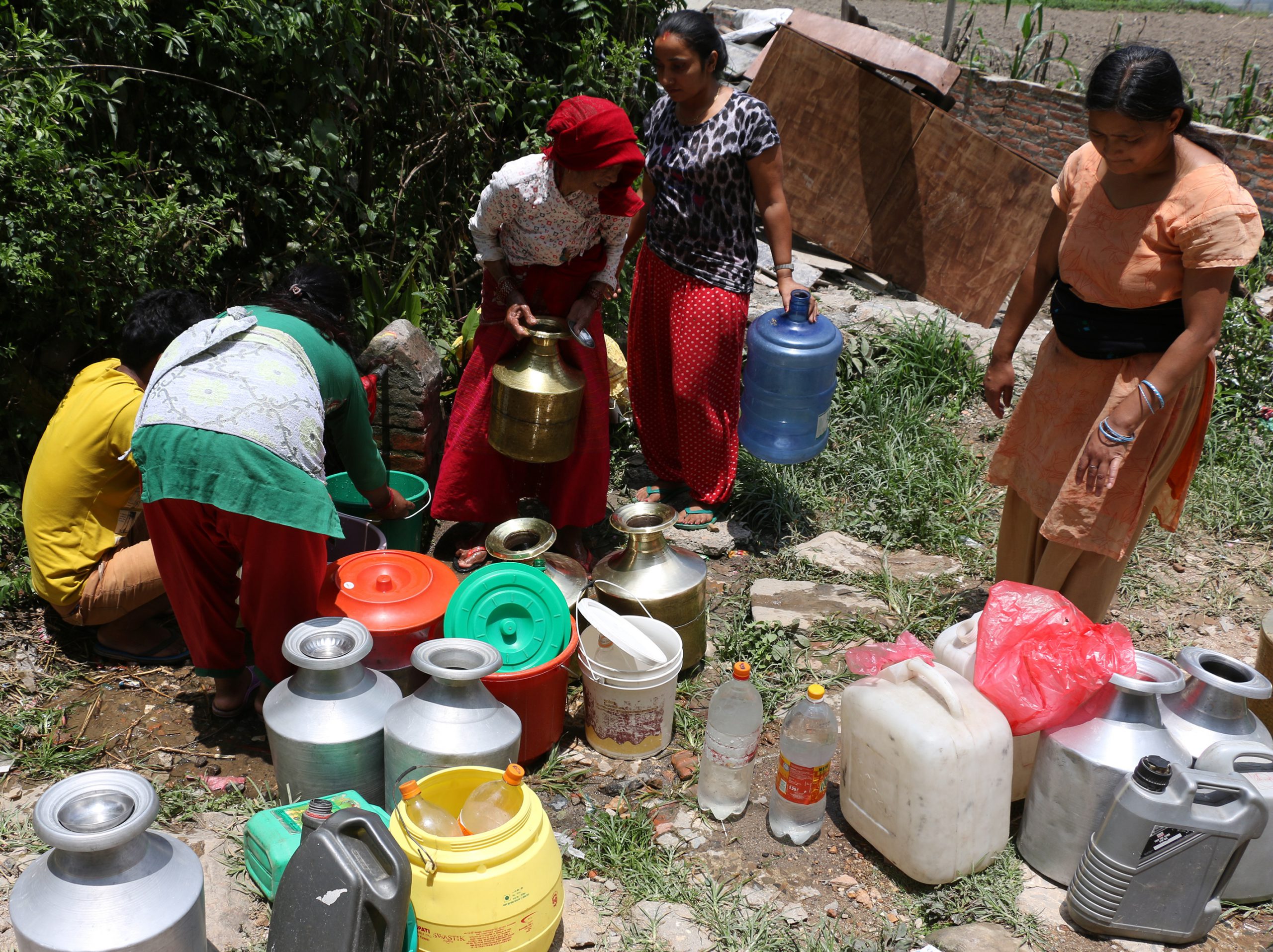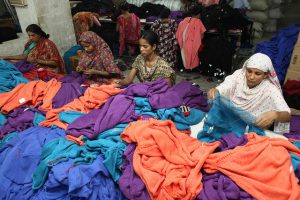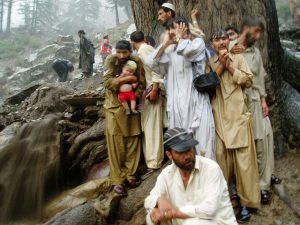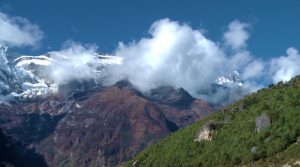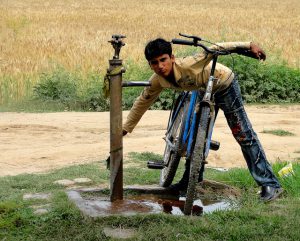Since the massive earthquake that hit Nepal on April 25 and subsequent aftershocks, Asha Adhikari and her family in Kaushaltar Wada-15, Bhaktapur district, have been reeling under acute water shortages.
Water pipes in the historic town near Kathmandu have been destroyed, making it difficult for Adhikari’s family to wash and cook and leaving them with no choice but to buy water from private tanks at a high price.
It takes at least two tanks of water (about 5,000 litres) to satisfy the monthly needs of Adhikari’s family of five.
Locals in Bhaktapur used to get a regular supply of water before the 7.9-magnitude earthquake decimated the country’s infrastructure, killing an estimated 10,000 people.
“It has been more than two months since the earthquake and the taps in my house have run out of a regular supply of water. The shortage of drinking water is becoming worse every day,” said Adhikari.
There are over 40 households in the area and more than half of them have no access to drinking water.
Shiva Gurung, a resident of Dhapasi, a town in the northern outskirts of Kathmandu, faces a similar plight. Living in a rented apartment, he visits a relative’s house nearby to take a shower and wash his clothes every Saturday.
“Thanks to my Uncle, I have a place to deal with my dirty laundry and take a bath. There are many others that I know who are not as fortunate as me,” said Gurung.
Water systems destroyed across the valley
The earthquake destroyed water systems and networks in and around the Kathmandu valley and other water sources have dried up across the 14 districts hit by the earthquake.
This has resulted in Rs 210 million (about US$2 million) worth of damages to drinking water projects in Kathmandu, according to a preliminary assessment by the Kathmandu Upatyaka Khanapani Limited (KUKL), the national body responsible for the supply and distribution of drinking water in the Kathmandu valley.
As well as pipelines and reservoirs, water pumps and filtration plants have also been affected, leaving some people with no access to sanitation and safe drinking water and giving rise to health concerns. The Pharping and Balaju drinking water projects have suffered the worst damage.
The authorities are struggling to re-establish water services. Milan Kumar Shakya, spokesperson of KUKL, said most of the major drinking water pipelines in the city have sustained damage and repairing the leakages has been a challenge.
“Many of the early leakages have been fixed and we are still working on many others. After the quake, the drinking water supply has completely dried at many places,” said Shakya.
“Currently, we are focused on solving the water problems of the worst affected areas. We are trying to supply water tanks to meet peoples’ daily needs and fix pipelines. It will take at least one and half years to repair the sustained damages,” said Rajit Ojha, chief of the Disaster Risk Management Section of the Department of Water Supply and Sewerage (DWSS).
Kathmandu’s chronic water shortages
Even before the earthquake, the densely populated capital city faced chronic water shortage, with demand more than triple its current supply of 85 million litres per day.
According to the Nepalese government’s Central Bureau of Statistics, one in every five Kathmandu households has no access to a domestic water source and two-thirds of its urban households live with an inadequate water supply.
But water shortage has worsened in the aftermath of the country’s worst earthquake in 80 years.
The situation is similar across the country. Over 40% of drinking water projects in the 14 severely quake-hit districts have been damaged, a recent report by the DWSS stated.
Out of 11,318 drinking water projects operating in those districts, 4,530 projects have suffered damages and 945 projects have ceased to supply water completely.
The worst damage was recorded in Sindhuli district in central Nepal, where over 70 projects have been affected. Sixty percent of water infrastructure in Sindhupalchowk and Kavre has been damaged.
The preliminary report estimates the cost of repairing damage to drinking water and sanitation sectors across the country could reach Rs 18 billion (US $1.8 billion).
